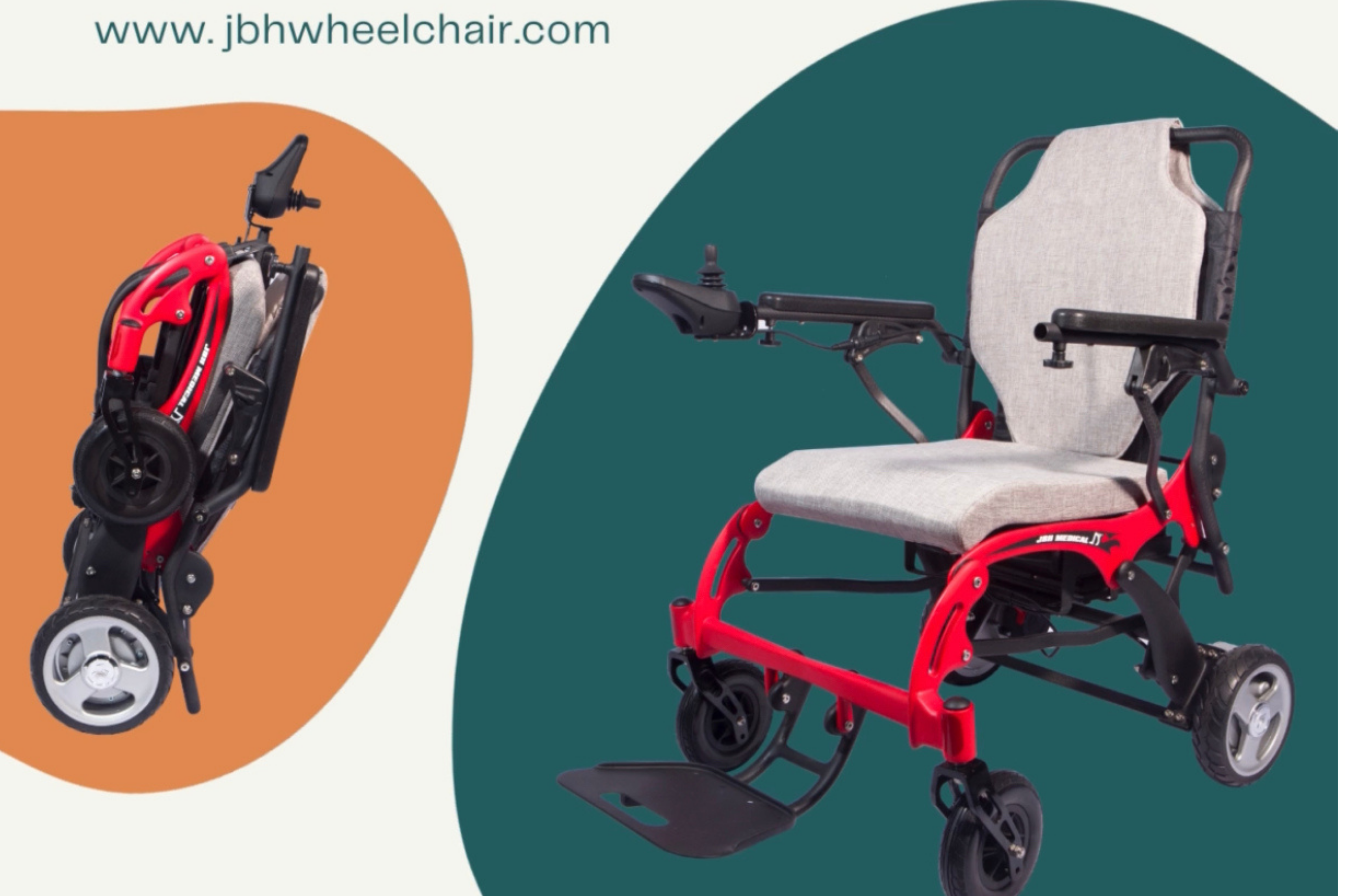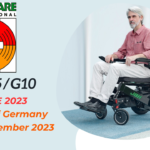An insightful analysis between power wheelchairs and standard wheelchairs
Purchasing a wheelchair is a crucial decision that requires thorough research. The chair you choose should be suitable for your lifestyle and daily activity. For instance, if you buy one through the National Health Service wheelchair services, you should note that your chair is only replaceable after five years.
This means the type of wheelchair you select should last you that duration before you are eligible for a new one. Therefore, it is inherent that you consider all essential factors differentiating power wheelchairs and manual wheelchairs. This includes chair seating, positioning, and the availability of custom options.
In this article, we will guide you through the decision-making process by examining the contrasts between standard wheelchairs, and power wheelchairs.
What Should You Consider Before Choosing a Wheelchair?
If you choose a power wheelchair, it is recommended that you consult a professional concerning your demands. You could confer with a medical practitioner as well as an occupational therapist (OT), or other assistive technology experts. Getting advice from individuals with the same condition as yours could also be helpful.
Scouring the internet for more information could be insightful. But most importantly, you need to find retailers who will let you try out power wheelchairs and assist in finding the perfect fit for you. This is much more convenient than ordering a wheelchair and having to return it for one reason or another.
Furthermore, a wheelchair should be suitable for your daily mobility needs such as office use, home accessibility (will the chair fit in your hallways?), transport (can the wheelchair fit in your trunk?), among other requirements.
What are the Clinical Needs?
You should evaluate your clinical needs for a power wheelchair to determine your comfort level. You will be spending a significant amount of time on the chair so you need to carefully select one that suits you. Try out several wheelchairs, both electric and manual, before settling on a purchase. Your chair selection should cater to good posture so that you reduce the risk of developing complications such as pressure sores, inadequate blood circulation, and digestive problems.
Another professional you should consult is a physiotherapist. This is someone who can use their expertise to examine your condition and propose the most suitable wheelchair option for you.
What about Your Lifestyle?
Your lifestyle plays a huge role in determining the choice between a manual and powered wheelchair. You need to review whether your home has all the essentials for supporting a power wheelchair. This includes; wide hallways, a storage facility, a power source to recharge the batteries, ramps at the entrance, stairlifts, among others. However, if storage is an issue, you should note that there are folding electric wheelchairs available in the market.
Your daily life and self-reliance greatly contribute to your decision when selecting the best power wheelchair. For example, do you travel via public transport and spend a lot of time outdoors? A power wheelchair is fitted with numerous controls and has many capabilities allowing configuration to your most complex needs.
Being aware of capabilities and limitations when using a wheelchair will also shape your decision. For instance, a manual wheelchair depends on upper body strength to hold the wheel rims and propel the chair forward. Repeating this action over and over could put considerable strain on your neck, shoulder, and back muscles.
Finally, consulting a physiotherapist or general practitioner (GP) to analyze your condition and the health of your muscles would help them recommend an appropriate wheelchair. They could also provide you with the contacts of a good supplier.
How Much Are You Willing to Spend?
Wheelchairs are usually not cheap. You need to properly plan on your source of funds to determine which wheelchair you can afford. Countries have varying payment options, but the most common ones for wheelchairs are insurance, Social Security, or grants. You need to carefully research your payment options and evaluate whether you are a viable candidate according to the requirements.
What Are the Accessories Do You Need?
Just like a car, a wheelchair requires proper maintenance and care if you expect it to serve you for a long time. You should constantly clean it and inspect it for wear & tear to avoid breakdowns and accidents. Make sure you tighten any loose components immediately you notice them. It is also advisable to find a local supplier that can provide you with servicing and parts when you need them.
A Comparative Analysis Between Power Wheelchairs and Standard Wheelchairs!
A manual wheelchair requires that you move by propelling yourself with your arms or by getting pushed by another person. These wheelchairs are normally lightweight and foldable. On the other hand, a power wheelchair is constricted in weight and size. It is suited for users with long-term mobility problems. Some also have tilting or recline options, joysticks for control, motors, among other features. Power wheelchairs are more expensive than standard wheelchairs due to their versatility and accessories. However, the fact that they are battery-operated makes them less dependable than manual wheelchairs.
So which type of wheelchair should you pick between the two? The answer will depend on your personal needs and condition. If you have weak arms and get fatigued easily then a power wheelchair would be suitable. Whereas if you have strong muscles and upper body strength then a manual wheelchair would not only be cheaper, but also easier to transport and maintain.
What Are Standard Wheelchairs?
Standard wheelchairs are also referred to as manual wheelchairs. They can either be self-propelled or require someone to push from behind. Standard wheelchairs are probably the most common in the market. They are available in hospitals, long-term care homes, and physical therapy clinics.
One advantage of manual chairs is their affordability. However, they are not suitable for everyone because of the physical capacity required to move them. For instance, people who have conditions affecting the use of their limbs, like those with chronic arthritis affecting their arms, can’t operate these chairs.
What Are Power Wheelchairs?
Power wheelchairs are a great solution for users who cannot wheel themselves or have limited mobility. They are much more comfortable thanks to their better seat padding, tilt options, footrests, armrests, and headrests. A power wheelchair is controlled by a joystick and powered by a rechargeable battery. It is also easy to maneuver this chair both indoors and outdoors.
Though power wheelchairs are more expensive compared to standard wheelchairs, their comfort and configuration options are unmatched. Before purchasing one, consult your insurance provider as this could save you a lot off the retail price.
The Benefits of Powered Wheelchairs
Power wheelchairs have many benefits attributed to them such as reduced pain and discomfort, better mobility, and improved quality of life. Other benefits are:
- Availability of many control options – Power chairs can be controlled by joysticks and touchpads which require minimal effort, hence can be used by people with little mobility.
- Indoor and outdoor capabilities - Power wheelchairs have a small turning circle therefore easy to maneuver indoors. The all-terrain build quality also means you don’t have to worry about getting stuck outside regardless of the conditions i.e. pavement, mud, grass.
- Speed - Power wheelchairs can go as fast as 8mph which saves you travel time.
- Customization - Power wheelchairs allow for personalized upgrades and improvements to increase functionality and comfort i.e. tilt and recline options offer pressure relief to users with paralysis.
Power wheelchairs are suited for users who want the freedom to travel and explore. For indoor users, mid-wheel-drive power wheelchairs provide better turning capability. For outdoor users, rear-wheel-drive power wheelchairs are better suited for the rough terrain.
Moreover, power wheelchairs are easy to customize to your specific needs. For example, the wheelchair allows you to adjust the leg rests to keep your legs above your heart. This is of great help to people suffering from conditions like Edema. The tilt and recline options help minimize pressure after sitting for long hours. This improves blood circulation and minimizes sores for users with reduced mobility.
Power wheelchairs, however, require a readily available power source. Experts recommend charging your chair battery overnight to avoid stalling when you are outdoors. Power wheelchairs are also considerably larger and heavier than manual wheelchairs so you should take this into account when traveling.
The Drawbacks of Powered Wheelchairs
- They can be expensive, especially when customized
- They are bulkier than manual wheelchairs
- They are not easy to transport and could require customized transportation
- Power levels need to be monitored constantly
- They need to be cleaned and maintained regularly to avoid rust and breakdowns
- They require lessons before a user can maneuver the chair comfortably
The Benefits of Manual Wheelchairs
Manual wheelchairs do have their advantages. For instance, some manual chairs can be folded and transported easily on buses, trains, and taxis. They are also less bulky, lighter, and easy to maneuver around tight spaces.
Manual wheelchairs also have fewer parts thus requiring less servicing and maintenance compared to powered wheelchairs. Because they are manual, you don’t have to worry about charging them or immobility due to power outages.
The downside is you will require a lot of physical strength to move the wheelchair and keep it balanced. Long-term wheeling of the chair could take a toll on your shoulders through wear and tear. Therefore, you should consult a physician to determine your health and muscle condition before purchasing a manual wheelchair. Traveling long distances could pose a challenge since you purely depend on your energy and physical strength.
The Potential Drawbacks of Manual Wheelchairs
- They require the physical capability of the user to move
- Continuous use of the chair could stress your muscles. This could pose a risk to your shoulders.
- They are not suitable for going up inclines or traveling long distances
- You may need help to get around in a manual wheelchair
Final Verdict
Finding a wheelchair that caters to all your needs might not be easy. However, you should choose a wheelchair that solves most of your current challenges, while still being upgradeable in the future. This can be achieved by; consulting widely, testing many wheelchairs, and examining your physical condition to ascertain your needs.
Purchasing a wheelchair is a substantial investment that should be made wisely. You could be spending hours on your wheelchair every day so don’t rush the selection process.
Manual wheelchairs are straightforward to use. They are affordable, reliable, comfortable, and easy to transport. They are also easy to maintain and don’t rely on technological capabilities.
Power wheelchairs are excellent for both outdoor and indoor usage. They are comfortable, durable, and are convenient for users with limited hand dexterity. However, they can quickly get expensive especially during customization.
All in all, your condition, needs, and budget will play a role in influencing your choice of a wheelchair. Hopefully, this information has set you on the right path in making this life-changing decision.





